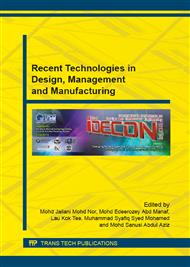p.441
p.447
p.452
p.457
p.462
p.468
p.473
p.479
p.484
Platinum and Aluminium Microresonator Bridges for Artificial Basilar Membrane
Abstract:
The artificial basilar membrane has been developed to mimic the mechanical performance of the basilar membrane in the cochlea. The artificial basilar membrane consists of an array of microbridgeresonators that are mechanically sensitive to the perceived audible frequency range between 20 Hz to 20 kHz. In this work, the finite element (FE) model of the microbridge resonators have been designed in Comsol Multiphysics 4.3 to work close to the audible frequency range. The lumped element (LE) model of the microbridge resonators have been calculated and compared to the simulated FE model. The microbridge resonators array with 0.5 μm thickness, 20 μm width and length varying from 275 μm up to 7700 μm have been designed using two different materials, i.e., platinum (Pt) and aluminium (Al). The microbridge resonators have been found to mimic closely the tonotopicorganisation characteristics of the basilar membrane. From the FE and LE models of the Pt and Almicrobridge resonators, Pt has been found to be a better material than Alfor the artificial basilar membrane design. For the same geometrical dimensions, the Ptmicrobridge resonatorsoperate within the audible frequency range while the Almicrobridge resonatorsoperate approximately 43%-53% above the audible frequency range.
Info:
Periodical:
Pages:
462-467
Citation:
Online since:
May 2015
Price:
Сopyright:
© 2015 Trans Tech Publications Ltd. All Rights Reserved
Share:
Citation:


